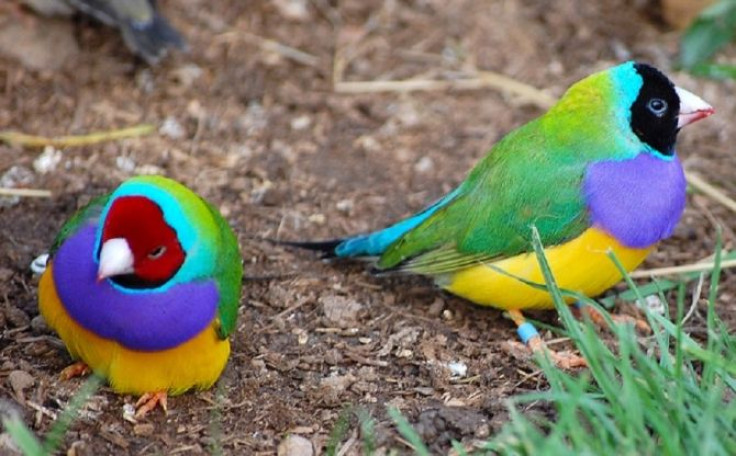Attackers or Daredevils? A Bird's Head Color Reveals Its Personality

Gouldian finches have personalities that correspond to the color of their heads, according to a new study.
Red-headed birds were found to be the most aggressive, knocking off other birds from feeders and picking fights when hungry. Black heads tended to be daredevils, taking more risks by venturing to unknown places than other birds.
"We think that head color is used as a signal of personality to other birds in the flock, so they know who to associate with," lead author Leah Williams, who studied the birds as part of her PhD project, said in a statement.
However the research team, led by Williams and Dr. Claudia Mettke-Hofmann from Liverpool John Moores University, was unable to find the personality type associated with blond finches.
Gouldian finches have very colorful plumage and the majority of them have heads that are either red, black, and a small number have yellow-colored heads.
They are found in open, subtropical woodland, where they nest in colonies and feed mainly on grass sends.
Scientists have previously noticed a link between different colors in animals and various aspects of their behaviors like aggression, sexual behavior and predator-avoidance tactics. They were able to link the color red to aggression in cichlids, other birds, reptiles, primates and even people.
However, researchers noted that individual behaviors like aggression can only be called personality if repeatable over long periods of time.
"Earlier studies didn't look to see if these behaviors are aspects of these animals' personalities, because they didn't repeat them multiple times," Williams said.
Researchers decided to see if color would correspond with personality after an Australian study had revealed that the red-headed finches are more aggressive, with red-heads dominant over black-headed birds.
Researchers chose to measure three aspects of personality - aggression, boldness and risk-taking - in the finches.
They measured boldness in birds by testing birds' tendency to investigate an unfamiliar object, like grey or brown bundles of string that were dangling from a perch.
Risk-taking was measured by seeing how soon the birds went back to the feeder after being shown a cardboard cut-out silhouette of a typical predator like a hawk.
Not only were black headed birds more likely to approach and touch the mysterious strings before their red-headed counterparts, they also returned to the feeder a lot sooner than red-headed birds after being shown the predator silhouette.
Researchers tested aggression by putting a feeder, which only had enough space to accommodate one bird, out for two hungry birds. Researchers measured aggression by seeing which birds would demonstrate greater hostility to get at the food in the feeder.
Researcher found that fiery red-headed birds were quicker to push each other and display threatening behavior with an open break than black-headed finches when trying to get to the feeder.
Researchers believe that the findings suggest that different head colors correspond with different behavioral tactics, and they plan to find out whether head color influences personality or the other way around and whether birds of the same color flock together.
"Color is clearly related to behavior. Different colors may mean each bird uses different behavioral tactics," Mettke-Hofmann said in a statement.
"The next step is to find out which birds associate with which," Williams said. "Do reds hang out with reds or blacks and do they do better for that?"
The findings are published in the journal Animal Behaviour.



























